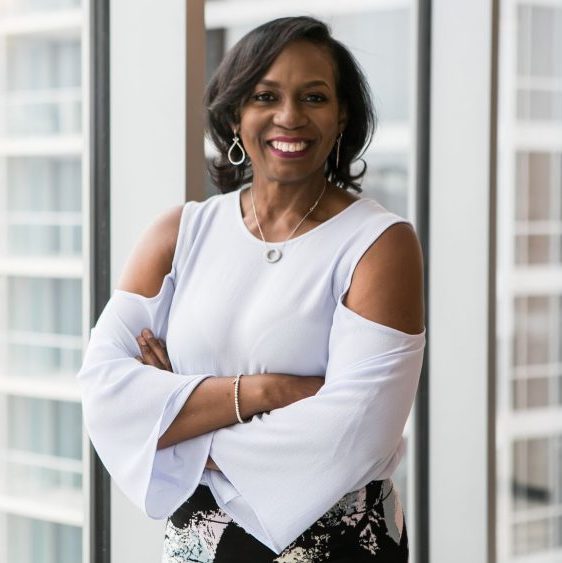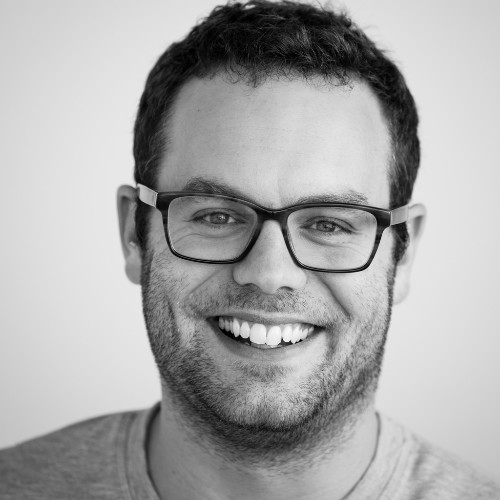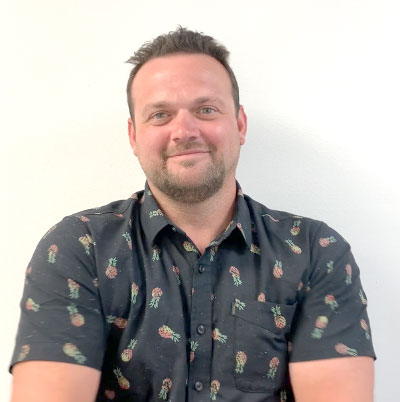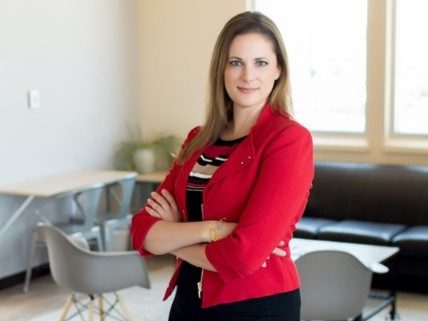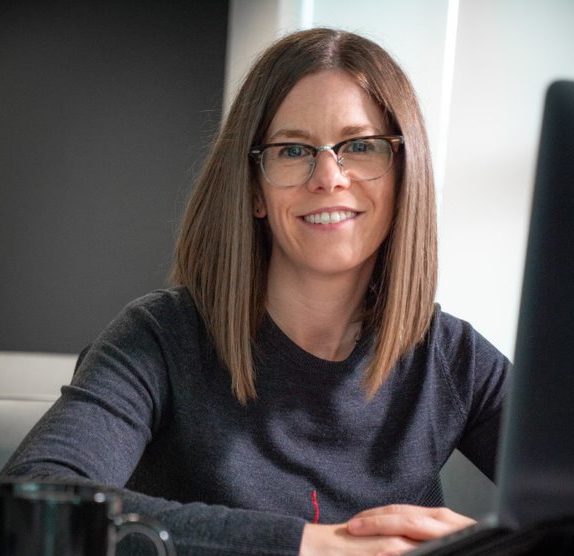Technology has made it a lot easier to collaborate in the workplace, but have all of its effects been positive?
Has technology been a positive force for creativity? Trust? Productivity? Probably yes and no for most of us.
Burunda Prince is the CEO of the Russell Center for Innovation and Entrepreneurship, and she walks us through a better orientation for companies to have about technology.
Being mindful of digital habits
Burunda says we need to be mindful about the role technology plays in our lives. Organizations, much like consumers, buy technology as novelty and rarely question if they are developing habits that serve them.
The focus, she says, has to be to “use technology to achieve key objectives, be ruthless with time, and know what needs to be accomplished.” Leaders should use technology to help their teams do their jobs better. They should only use technology if it adds substantial value and not to fit in.
Regaining the energy
Digital workplaces are missing the energy of having people in a room and the heat of discussion. Burunda says that collaboration is key to regaining the lost energy. People need to bring their ideas into the conversation and think about how they tie into values and shared objectives.
Everyone wants to feel supported and cared for. Leaders, Burunda says, need to find creative ways to promote a sense of camaraderie. And so, digital leaders need to open themselves up to conversations around challenges their teams face in their personal lives and things that touched them. “We’ve gotten a deeper sense of energy with this disconnectedness because we’ve had to work harder for it. And we haven’t taken it for granted.”
Unearthing creativity
Burunda says leaders need to lead by example. They have to enable creativity by allowing them to explore alternative routes, do things differently, and even fail as a part of the learning curve.
Creativity, Buruda explains, is not linear—ideas can come from anywhere. Every team is a mix of creative and process-oriented people. Leaders need to consider different perspectives and take a mindful approach that benefits the situation and objective.
Building an equitable ecosystem for black tech entrepreneurs
Burunda says that conversations around equity and race can be awkward and uncomfortable because the results are not readily visible. While they push the needle, progress will seem slow to people living in that moment. She explains that people have to communicate and be willing to change while staying focused on their objectives and goals.
The hope is to achieve sustained effort towards such topics and not “have collective amnesia once everything goes back to some new form of normalcy.”
Links
Quotes
13:30 – “I think leaders have to lead by example. So they have to give their own teams permission to be creative, permission to do things differently, or experiment and explore, and then that and realize that failure will come with that as well. That’ll be a byproduct of it. But it’s okay, because it’s a learning process.”
5:02 – “It (Technology) can be good or bad, helpful or not, depending on what we do with it, and what the intention is behind it. So I would say, focus your use of technology around key objectives, be ruthless with your time and know what you’re trying to accomplish with it, so that you control the technology and the technology doesn’t control you.”
Today our guest is Burunda Prince. She is the CEO of the Russell Center for Innovation and Entrepreneurship. Hi, Burunda. How are you today?
I’m great, Neil. How are you?
I’m doing excellent. We are recording this at the end of the year. So we’re just reflecting on the year it’s been obviously, and looking forward to the next one. But when we start off these episodes, I like to do a check in question just to establish our humanity here. So my question for you is, what are one or two of your favorite smells?
Well, I’m glad you gave me two. One of them is that new baby smell. I love the smell of new babies when you snuggle them and their necks and you just smell them. They smell like so clean and pure. And yeah, I mean, I would love to bottle that up. So that’s one,
They don’t sell that one in candle form, I don’t think.
No, they don’t I haven’t found it yet. So I’m looking for it, though. And the other one is really like Georgia red dirt when it rains. I think it’s a combination of the sound, but the smell, it’s like this fresh, dirt, earthy smell to me. And it makes me reminisce about growing up in Georgia and being here and it’s just a very soothing nostalgic connection that I have with that smell. So, two of my favorite.
That’s great. I think mine, we have some forest land in Indiana that I like to go out to and reconnect with, and as soon as we pull up there, like there’s a very distinct smell. I couldn’t even really describe it. But it’s like, almost this wet decaying smell that for whatever reason it just excites me and makes me feel like, yeah, I’m alive right now. That’s good one. So you mentioned Georgia. You’re in Atlanta right now. Why don’t you tell us a little bit about what the Russell Center for Innovation and Entrepreneurship is?
We are a 54,000 square foot facility that’s really focused on supporting black entrepreneurs in terms of generational economic mobility and wealth building. And the way that we do that we’re located here in Castleberry Hill, which is where the most black businesses are located in the Atlanta area. We’re built on the Russell family legacy, a family that went from their father being a plasterer and doing shoe shining to becoming a multimillionaire conglomerate in real estate construction, and also airport concessions. So we’re building on that legacy of entrepreneurship and family wealth, and expanding that to the Atlanta ecosystem as well.
What do you feel like is the state of black tech entrepreneurship right now? Is it something that you guys are kind of riding a wave that’s going through? Or do you feel like you’re really trying to work hard to get it going?
We’ve been doing this work long before it was a thing I say, partly because we’re all black. So this has been a lifelong journey for all of us, in one way or another. But the other thing is because this need was here well before, I think, many people were aware of the need. So we’re building on the momentum that we’d already begun and started. But in terms of the state of black technology, it’s a reflection of what we see in the rest of society right now. We certainly have the inspiration and aspiration. But we also have the challenges that we’re trying to problem solve and face collectively. So it’s one of those things where I say, we’re all much more aware of what we need to do. Now it’s a matter of us, as my grandmother would say, put on your big girl panties, pull them up and get the work done.
I’m excited for the work you’re doing. We’re excited to learn more and see what comes out of your center. It’s going to be really exciting to see. Let’s start with just some questions about in general digital work, especially from a leadership perspective. We’ve talked before about just the habits that we run into, and we develop without realizing we have these habits. So what do you feel like are some digital habits that leaders need to be more self aware about, both for themselves and for the teams that they lead?
I think that technology has become so pervasive in everything that we do now, from the time that we wake up in the morning, the first thing we’re doing is reaching for our phones. We don’t even have clocks anymore to wake us up, to the last thing at night, we’re checking our emails and all in between. And we’ve got our Apple watches. And I mean, technology is just so prevalent and pervasive, and it’s become to the point where it becomes intrusive, if we don’t take measures and steps to be mindful about how we’re using it. It’s just like anything else, it can be good or bad, helpful or not, depending on what we do with it, and what the intention is behind it. So I would say, focus your use of technology around key objectives, be ruthless with your time and know what you’re trying to accomplish with it, so that you control the technology and the technology doesn’t control you. And as a leader, I’m always looking at how do I leverage technology to help my teams do their jobs better and easier, as opposed to using technology for technology’s sake. It’s the new, shiny object, or you feel like you should be doing this. And it’s more activity than it is actually having some substantive value that it’s bringing to it.
Do you have any examples either in your own experience or as you see other companies going through your center of maybe warning signs or ways that people are using technology? Like you said, just because it’s flashing and just because it’s there, it doesn’t really add much. Or we often say it’s not human centric, like it’s fulfilling some purpose, but it’s not helping humans. Do you have any examples of that?
As an engineer, we’re always looking at the technology behind things. And this is one of those things where engineers have to almost fight against themselves. Because we’re looking at bells and whistles, how do we improve this? How do we make this better? And sometimes we have to ask ourselves, why? Why are we doing this? Who are we doing this for? So we always fall into this pitfall of this seems really exciting, because look, it’s cool. It’s different. Well, but is it necessary? Is it needed? Who’s it going to help? How are they going to use it? And I see in oftentimes, organizations where there is software or technology overload, so it’s almost like every cycle or two, we’ve got to get in the latest this, we’ve got to get in the latest software. It’s almost like saying, I’ve got to get the new laptop, the new Apple iPad when it comes out, or the new Apple iPhone, just because it’s new, not because it’s providing an additional value. And I see that all of the time. And it’s easy to understand why that happens. Because there is this affinity when you’re using technology, there is this cool factor when you’re using technology. But at the same time, we have to be mindful and intentional about why we’re actually using it and is it creating or encouraging behaviors that we don’t want to encourage.
I think among startups even, there’s even more pressure to like fit in, you can’t just use any software, you got to use the cool software, and you got to use the new stuff that other people aren’t using. And God forbid you use Microsoft Teams, because that’s like old school stuff. You can’t go there.
If you’re not on Zoom now, it’s like what? What are you doing? I think it’s very similar to people will say, oh, your email, if you’re on Yahoo, oh, my God, who’s on Yahoo? That kind of thing. If you’re not on Gmail, or something, then you’re behind. Yahoo may be working just fine for those people. But sometimes people can associate your sophistication with the use of technology, with the sophistication of the technology you’re using, and those are two very, very different things. It’s just like, there’s ample data, you can collect data on everything, you can have data overload, but the key thing is collecting the right data, so know what it’s telling you, and then how to act on that data. So it’s really about again, being mindful and intentional about what your objectives are, and then what will help support those objectives.
I like that. Burunda, we’re in this time of where we’re distanced apart, we’re not usually together a lot. And one of the things I think a lot of people talk about is missing is the energy, that spontaneous energy that you get when you walk into a room and everyone’s there, everyone’s working. The whiteboards are filling up with stuff, and you just feel that energy going on. What are some ways that you’ve discovered or you can give advice to other people in terms of how we can pass that energy from person to person better in digital environments?
This is very timely for me, Neil, because literally right before this, our interview, I was in a virtual brainstorming session with my team, and that energy that you’re talking about is a real thing. And so a couple of things that I tend to do is I make it more collaborative. So making sure that we’re all in there bringing our ideas and focusing on the ideas that excite us because if it excites us, it’s probably going to excite others as well. And then we make a compelling case by demonstrating value and tying it back to how is it going to help us? Is it going to help me do my job better? Is it going to help me do my job faster? Is it going to create customer loyalty or stickiness? So reiterating the values and then focus on the shared objective. Hey guys, we’re in here, we need to say what our plan and schedule is going to be day to day, from Q1 to Q2, otherwise, we don’t get out of this room. So motivation helps a lot, too, sometimes, but also just creating other opportunities to connect and create that energy. So we also recently had a virtual happy hour, where we ordered pizza, and everybody had their favorite libation or drink, and just talking about what had happened over the course of the last year, what’s going on in our lives, because doing work is really all about connecting with people. Technology may enable that, but it still comes down to people and trust and vulnerability. And you only get that by spending time with people. And yes, it’s harder to do it. But we try to find other creative ways to create that camaraderie. We did a scavenger hunt, a virtual scavenger hunt. So we’re trying to find new and different ways to not only engage our companies and stakeholders, because we’re delivering content to them virtually, but make it interesting for us as a team, too, so that we’re doing our work and we don’t feel isolated, we want to feel supported. Everybody wants to know that someone cares, particularly in this environment. And you never know what people are going through in their own personal lives and what has touched them. And so allowing space in place for those kinds of conversations as well is really important. So the energy is different, granted, it is much easier to get that energy when you’re with people. But I do think that in some ways, we’ve gotten a deeper sense of energy with this disconnectedness because we’ve had to work harder for it. And we haven’t taken it for granted.
Yeah, I think that’s a great way to put it, the fact that when you do have those moments, when you are all together, you realize the seriousness of having this time, that’s good. And I think, as we move out of this pandemic, and we do have time to actually be together, even if your default is remote or distributed. When you do get together with people, you’re going to realize, like you said, how important that time is, and you’re going to make the most of that and really make sure that you’re using it to the best you can, which I think leads into another point that we’ve looked at about, there’s this feeling of someone’s like productivity on one side, and creativity on the other side. And it’s probably a false dichotomy that we have of either I’m being productive and I’m focused down or I’m being creative and I’m doing something new and I’m being innovative on that side. Even in my own life, when I’m thinking about how I structure digital teams that I’m leading, I lean more towards that productivity side of saying, like, let’s make everything perfect, let’s make everything structured. My meetings are more intentional and my life, I feel like, is more intentional in that way. But I just feel like there’s that lacking side of those spur of the moment conversations or the things that really bring out that creativity. So how do you recommend the leaders you’re working with to strike a good balance between those two? Or maybe you have a different framework of looking at productivity and creativity?
Yeah, I think leaders have to lead by example. So they have to give their own teams permission to be creative, permission to do things differently, or experiment and explore, and then that and realize that failure will come with that as well. That’ll be a byproduct of it. But it’s okay, because it’s a learning process. So balancing the structure that you’re talking about with processes and efficiency and productivity, with the creativity piece of it, it’s not a linear thing. So I found that sometimes we will be doing something structured. And a comment or discussion will spark the creativity. I could do one of two things, I could bring the team back to the structure. Or I could elect the team that spanned and elaborate on the creativity piece. And I’ve done both. Sometimes I was like, look, guys, we got to get this done, we have a deadline. So let’s table that or let’s park it here on the sticky note there. And let’s get to the structure. And then let’s see if we can recapture that creativity later. But sometimes the idea is so good, or the intensity or the energy is so good from that chord that it struck, that I put aside that structure part and say, hey guys, let’s go with this. This is something good. So I think being open to it and trying to discern which one it is at any point in time based on what your constraints are, what your objectives are, what your timing is, is one element of it as well. And I think the way that you compose your team, I have people on my team who I think are very talented in terms of creativity. They are people that I have to tether them, the balloon with the string. And I’m always trying to pull them down a little bit, because they’re just the kind of people that are like big picture people. And I have other people who have the prototypical kind of engineering mentality where it’s like, hey, let’s get the structure and the processes. And so by bringing those different perspectives, I think, I get the best of both, because there’ll be some times when the creativity piece will lead. And there are some times when you need to execute on it at some point and bring it down to what is tangible. So having those both coexist in a way that sometimes might be uncomfortable for one or the other. But when people see the outcomes and the benefits of it from, wow, that idea went from good to great, or, wow, they took this idea that I had that was nebulous, and I couldn’t get my arms around it. And look, they made it tangible. And we have concrete steps to make that happen. So that both, whether you’re the left brain or the right brain, sees the benefit of working with the other.
One of the topics we talk about a lot is like what are the unique talents that humans bring to a skill like leadership. And I think you just hit on one very well, in the sense of being in that meeting. And when somebody says something, being able to make that call. Is it there’s so much energy here, we can’t ignore it, we have to deal with this right now and let this grow and see what happens? Or do I find some way to hold on to this and put it off to the side and bring it back later? That’s really hard to teach a machine how to make that distinction between the two, because there’s so many factors that go into that, the feel of the room, what the idea is about and so many different things. So I’m glad you hit on that. And like you said, trying to build that balance, these are things that really we need to rely on humans to do well. And I would even say that most humans can do that well. People who are in that leadership role, we need to learn those skills and become much better. That’s a great example. I want to take some time to talk about the work you’re doing, especially in terms of race, diversity, equity, belonging are topics we talk regularly on the show, I want you just to be honest with us for a while. You’re talking to me as a white man. We have a lot of people in the tech field that come on. 2020, for most of us, has been some awareness of acknowledging a deeper level of the problem than we probably started off the year with no matter where we started with. I think we can all agree that there’s at least some more awareness there. But black women, black men have been down this road many different times. And for many of you, it feels like it’s the same story over and over again. So I want you to give us a charge and almost like a warning sign. Where do you think most of us will end up stalling in this progress of moving towards a more equitable ecosystem for even if we just take black tech entrepreneurs? What’s that line where you sense that most white people are not quite willing to cross, they start to get uncomfortable, and they don’t want to move any farther, and how can you push us beyond that?
The discomfort is certainly a big piece of it. And it’s uncomfortable on both sides. It’s uncomfortable from my side as a black woman, either being held up as the standard bearer, or the person that has to respond to or answer or dress or represent an entire race of people or entire gender. And it’s uncomfortable, I think, also on the other side, where people are like, I don’t want to make a mistake, I don’t want to unintentionally insult, I don’t want to minimize. And so we’re all trying to go through this in our own way and sort through this, mind you during a pandemic, which is another level and layer of stress there. I think, where there’s the potential for stalling is where there’s the potential for stalling with any kind of new thing. Take example, it’s going to be 2021 on Friday. Everybody’s going to make new year’s resolutions to go to the gym. The gyms are going to be packed that first month or two. But then you see people falling off after about maybe late January, early February. And the reason why is because it’s hard. And you don’t start seeing the results as quickly as you would like to get that affirmation or to get that motivation and that continued inspiration. And I think the same thing is true for what we’re seeing in terms of racial equity and justice. It’s because, again, it’s hard. And it’s going to take time to see the results and the fruits of the labor of things that are being laid down now. And that’s hard. When I say going to take time, it’s not going to be a 5 year thing or a 10 year thing or even maybe a 20 year thing. There will be progress along that way. But it will feel like a snail’s pace to many of us who are living in that time and in that moment, and maybe to other people will feel like it’s moving too quickly and too fast. So with anything, I say, you have to stick with it, you have to continue to adjust and readjust. But most importantly, you have to be honest about it and upfront and talk and communicate, and then be able to adapt and change. And keep in mind what your objective and your goal is. Realize that people can become your allies, if you allow them to be so. I’m so grateful for the kinds of courageous conversations that are happening all over the place now, be it in the workplace, or at home, or I mean, discussions that never happened before, that are awkward and uncomfortable, and sometimes make you mad and angry, but they’re happening. And I think all those things are really necessary for there to be this sustained effort. And I have every hope that this time, there is a sustained effort, that it’s not the bright, shiny object, it’s not the platitudes, that we don’t have collective amnesia once everything goes back to some new form of normalcy. And we’ve got to hold each other accountable for that just as we hold each other accountable for bottom line results, for sales or for profits or anything else, we’ve got to hold each other accountable for making sure that that doesn’t happen, because it’s way too important. It’s people’s lives, it’s people’s livelihoods. And it’s not a black problem or a brown problem. It’s a we problem. And I tell people all the time, particularly, my white male counterparts that we tend to default to the familiar when things aren’t going right, or we feel uncomfortable. And when we’re seeing that, we don’t know how to do something, we do like any other business problem, tap into your networks. And if your network is not robust enough, or expansive enough, expand it. It’s the same thing we would for any other challenge that we have. And so I’m saying put those same skills to work with this as well, allow people to help and to talk through it. And we’re both resilient and ingenious in terms of how we are as humans, and so we can do this, we just have to decide that we want to.
Yeah, well said. I mean, like you said, it is a solvable problem. It’s not like it’s impossible. We have a lot of barriers in front of us, and ones that we’ve put up. I think the default position for myself and people like me, I feel like is that we want a path, we want someone to show us what to do. And we often look to people like you to tell us what that’s supposed to be. And that’s not the right position we should take, one, because I mean, you don’t know what it’s like to be a white man. So to be in that position of power, just becoming self aware of what that means, historically, what it means for us individually. And then to put in the hard work of trying these things. I mean, even when it comes to hiring practices, building more diversity into your company, that doesn’t mean like I just say I want more black people in my office. That doesn’t work. You got to put in the hard work. You have to look at where you’re recruiting, look at where you’re investing into and different things. So I just want to take some time to appreciate you and your career and everything you’ve done and how you haven’t stopped and you’re not stopping and you keep pressing forward. And I love what you’re doing. I think this is the best place for you right now for all of society, not just for black tech entrepreneurs, but to see the successes that will come out of the center. We’re so excited about that. And we’re excited to hopefully be a cheerleader voice and partner as you keep in your career.
Yeah, I really appreciate this, Neil. I appreciate your forthrightness and your honesty and your humanity. You make me laugh and I really really enjoy that because bottom line is we have more in common than we have different and so if we just hold fast to that, and I look at what we’ve done with a pandemic, the brilliance that has come up with not one but two but three vaccines in such a short period of time, and I feel like we can do anything. We put a man on the moon. I mean, we’ve done some crazy, impossible things as humans. We can do this, too.
Yeah. Amen. Well, let’s do it. We appreciate you being on the show. If people want to know more about the center that you are a part of, where can they go to learn about that?
They would go to www.rcie.org.
Excellent. We look forward to staying in touch and hearing from you again soon. Thank you.
Thank you so much, Neil. You have a great day.
Burunda Prince is the CEO of the Russell Center for Innovation and Entrepreneurship.
